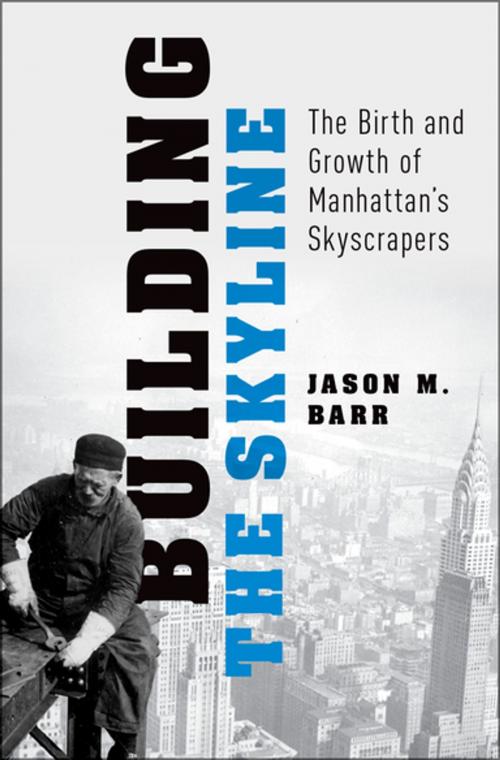Building the Skyline
The Birth and Growth of Manhattan's Skyscrapers
Business & Finance, Economics, Urban & Regional, Nonfiction, History, Americas, United States, State & Local, Business Reference, Corporate History| Author: | Jason M. Barr | ISBN: | 9780199344383 |
| Publisher: | Oxford University Press | Publication: | May 12, 2016 |
| Imprint: | Oxford University Press | Language: | English |
| Author: | Jason M. Barr |
| ISBN: | 9780199344383 |
| Publisher: | Oxford University Press |
| Publication: | May 12, 2016 |
| Imprint: | Oxford University Press |
| Language: | English |
The Manhattan skyline is one of the great wonders of the modern world. But how and why did it form? Much has been written about the city's architecture and its general history, but little work has explored the economic forces that created the skyline. In Building the Skyline, Jason Barr chronicles the economic history of the Manhattan skyline. In the process, he debunks some widely held misconceptions about the city's history. Starting with Manhattan's natural and geological history, Barr moves on to how these formations influenced early land use and the development of neighborhoods, including the dense tenement neighborhoods of Five Points and the Lower East Side, and how these early decisions eventually impacted the location of skyscrapers built during the Skyscraper Revolution at the end of the 19th century. Barr then explores the economic history of skyscrapers and the skyline, investigating the reasons for their heights, frequencies, locations, and shapes. He discusses why skyscrapers emerged downtown and why they appeared three miles to the north in midtown-but not in between the two areas. Contrary to popular belief, this was not due to the depths of Manhattan's bedrock, nor the presence of Grand Central Station. Rather, midtown's emergence was a response to the economic and demographic forces that were taking place north of 14th Street after the Civil War. Building the Skyline also presents the first rigorous investigation of the causes of the building boom during the Roaring Twenties. Contrary to conventional wisdom, the boom was largely a rational response to the economic growth of the nation and city. The last chapter investigates the value of Manhattan Island and the relationship between skyscrapers and land prices. Finally, an Epilogue offers policy recommendations for a resilient and robust future skyline.
The Manhattan skyline is one of the great wonders of the modern world. But how and why did it form? Much has been written about the city's architecture and its general history, but little work has explored the economic forces that created the skyline. In Building the Skyline, Jason Barr chronicles the economic history of the Manhattan skyline. In the process, he debunks some widely held misconceptions about the city's history. Starting with Manhattan's natural and geological history, Barr moves on to how these formations influenced early land use and the development of neighborhoods, including the dense tenement neighborhoods of Five Points and the Lower East Side, and how these early decisions eventually impacted the location of skyscrapers built during the Skyscraper Revolution at the end of the 19th century. Barr then explores the economic history of skyscrapers and the skyline, investigating the reasons for their heights, frequencies, locations, and shapes. He discusses why skyscrapers emerged downtown and why they appeared three miles to the north in midtown-but not in between the two areas. Contrary to popular belief, this was not due to the depths of Manhattan's bedrock, nor the presence of Grand Central Station. Rather, midtown's emergence was a response to the economic and demographic forces that were taking place north of 14th Street after the Civil War. Building the Skyline also presents the first rigorous investigation of the causes of the building boom during the Roaring Twenties. Contrary to conventional wisdom, the boom was largely a rational response to the economic growth of the nation and city. The last chapter investigates the value of Manhattan Island and the relationship between skyscrapers and land prices. Finally, an Epilogue offers policy recommendations for a resilient and robust future skyline.















